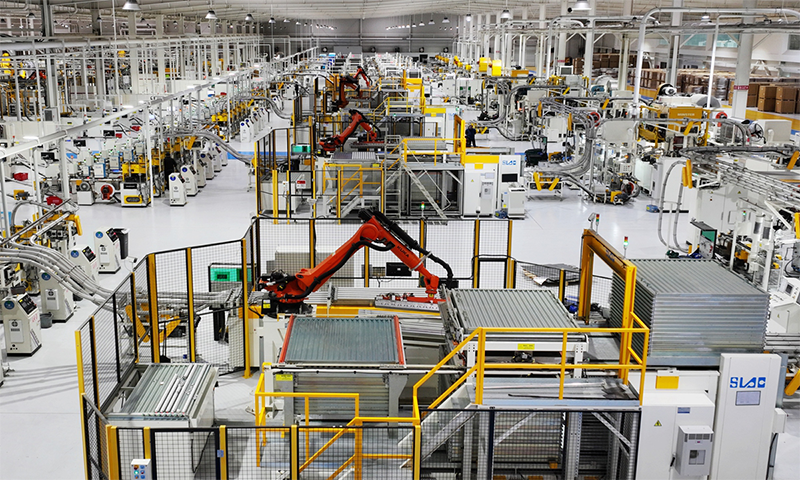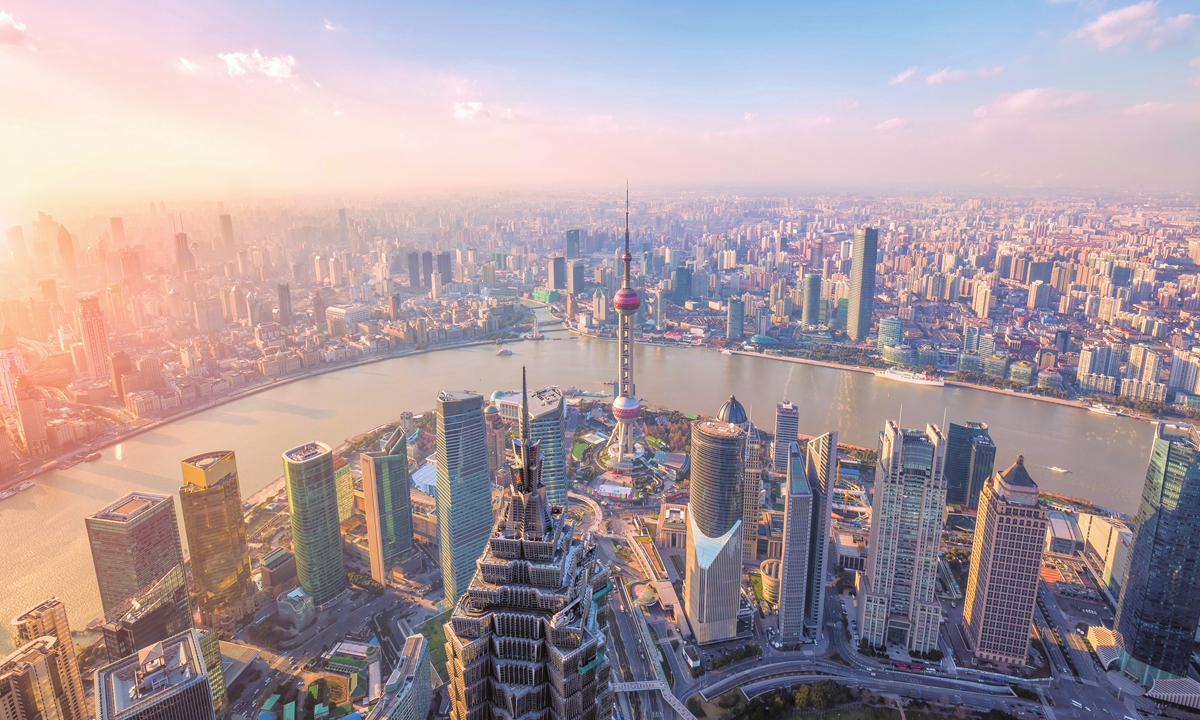Innovation-driven industries propel new quality productive forces, turbocharging Hefei’s rapid growth
Intensive technological innovations propel new quality productive forces
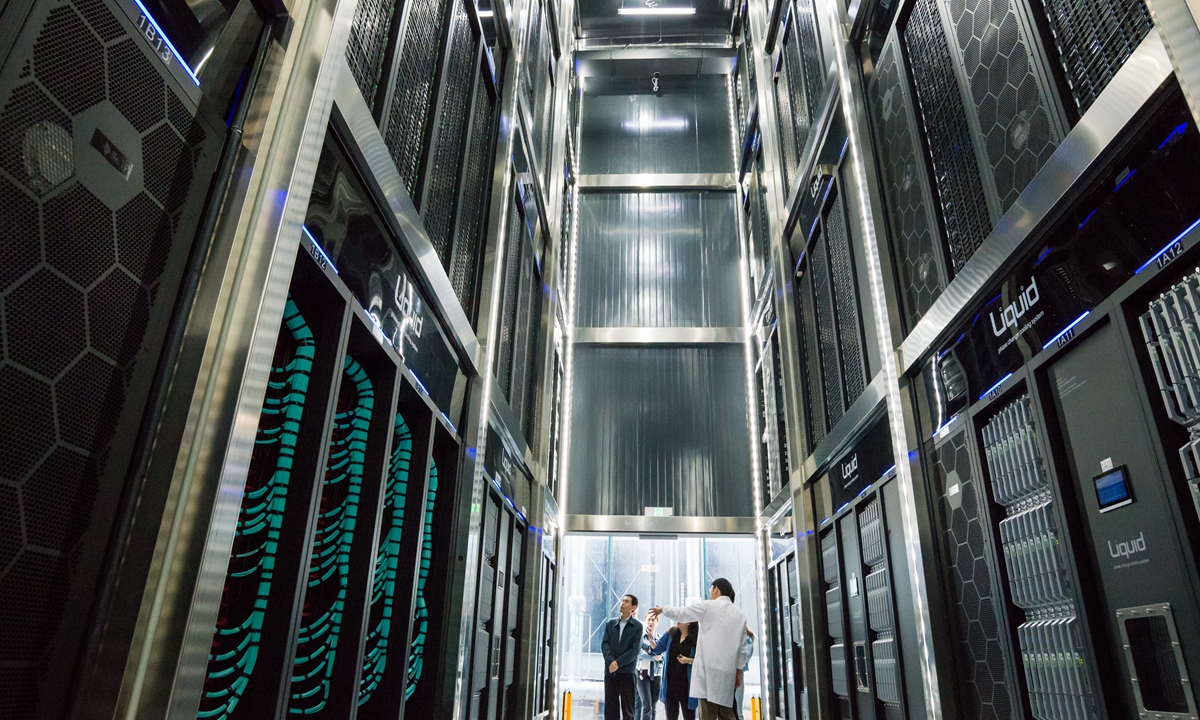
An inside view of Chaohu Mingyue supercomputer at the Advanced Computing Center in Hefei, East China's Anhui Province on April 17, 2024 Photo: Chen Tao/GT
Hefei, the provincial capital city of East China's Anhui Province, in many aspects is similar to other rapidly developing cities in China. Known for tall buildings and plush office towers, outside a street is nicknamed "Quantum Boulevard," home to a number of cutting-edge technology firms.
Propelled by the local government and companies, the city has attracted global attention in recent years, with some even attributing much of the city's achievement to the "Hefei model", a distinctive strategy for nurturing emerging industries by effectively combining the roles of state-owned capital and private enterprises.
Official data showed that Hefei's GDP has risen to 1.27 trillion yuan ($175 billion) in 2023, up from 416.8 billion yuan in 2012, and its ranking among Chinese mainland cities rose to the 20th from the 31st, a truly "dark horse" if calculated by its GDP growth.
Market insiders and Chinese experts attributed Hefei's development to the tech cluster of pillar industries including NEVs, chips, and AI innovation, as well as new industries including quantum technology. The city, serving an example of national model of excellence in the realm of new productivity, is in line with Chinese government's plans to promote new quality productive forces.
Industry clusters
Kong Wansheng, vice president of Hefei-based Guochuang Software Co, still remembers clearly how difficult when he wanted to apply for a telephone for his family in 2000. He had to ask someone to help him get through to it, and had to wait for one month before being hooked up to the mobile network.
The year of 2000 marked the beginning of Guochuang's business in Hefei, when China's telecommunications industry took off. From a school-run enterprise to a Shenzhen stock market listed company, Guochuang primarily engaged in data intelligence products by integrating software and hardware.
Now, any individual can go straight to a shopping mall and get connected to the mobile network in few minutes, Kong told the Global Times, adding that the reason behind the progress is the deep integration of the information technology with telecommunications. In 2023, the revenues reached 251 million yuan ($35.3 million), a growth of 4.78 percent year-on-year, the company said.
"Our company's expansion has been catching up with the pace of China's economic development, and the strategy of developing new quality productive forces has given us more room for further development," Kong said.
The telecommunications industry is only part of the clusters which Hefei is proud of. Other industries including integrated circuits, quantum computing and artificial intelligence are also listed as the city's pillar industries to drive the city's tech progress.
Across the Hefei Advanced Computing Center of Hefei High-tech Zone, there is a blue glass cube covering a length, width and height of more than 10 meters, named "Chaohu Mingyue" supercomputer. Inside it, a giant computer screen occupies 225 square meters on the upper and lower floors. Through the glass, a Global Times reporter saw that the entire giant computer was immersed in transparent liquid.
"The computers will generate a lot of heat in operation, and the server's operating functions will be affected when the temperature rises, so we designed this electronic fluorinated liquid with a lower boiling point to achieve physical cooling, according to Han Shengjun, vice general manager of Hefei Big Data Asset Operation Co.
If the 1.4 billion people in China are asked to calculate 100 days at a rate of once per second 24 hours a day, "Chaohu Mingyue" supercomputer is able to do it in less than one second.
The giant computer can simultaneously process 3 billion image data, 900,000 hours of voice translation, and 3,000-km of autonomous driving data. Its storage capacity is equivalent to the storage capacity of 120,000 128G mobile phones, and can store approximately 10 billion high-definition pictures, according to Han.
Chinese Premier Li Qiang on May 10 stressed accelerating the development of new quality productive forces and improving innovation-driven development capabilities.
During his inspection tour in Anhui Province, Li said that China will increase investment in basic research to support tech innovation. Noting the vitality of science and technology lies in its utilization and benefiting humankind, Li urged for deepening reforms to promote the transformation of scientific and technological achievements into real productive forces.
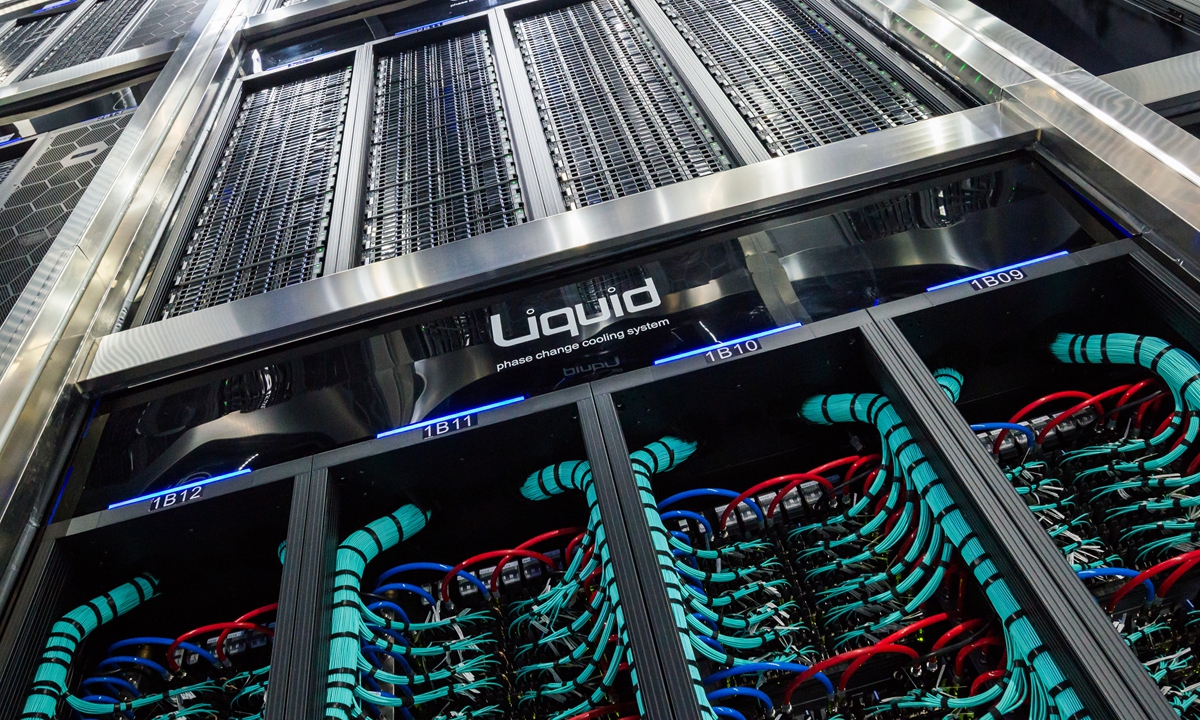
An inside view of Chaohu Mingyue supercomputer at the Advanced Computing Center in Hefei, East China's Anhui Province on April 17, 2024 Photo: Chen Tao/GT
Innovation-driven growth
In the high-tech industrial zone in Hefei, dozens of quantum industry chain companies including quantum communication, quantum computing and quantum precision measurement are scattered on both sides of Yunfei Road, known locally as "Quantum Boulevard".
"Developing new quality productive forces will be a decisive step in the economy's high-quality development," Guo Guoping, deputy director of the Key Laboratory of Quantum Information of the Chinese Academy of Sciences, told the Global Times.
It has been four months since China's indigenous third-generation superconducting quantum computer, Origin Wukong, become operational. To date, the computer has completed 178,000 computing tasks for users in 120 countries and regions.
According to Guo, quantum computing power can be applied to finance, chemical industry, biomedicine, electricity and other fields.
Official data showed that the output value of Hefei's strategic emerging industries has grown at an average annual rate of 17.1 percent in the past decade, the proportion of industries above designated size has increased from 30.2 percent to 54.7 percent, and the contribution rate to industrial growth has increased from 69.9 percent to 84.1 percent.
In 2023, the output value of the city's strategic emerging industries increased by 11.1 percent year-on-year, accounting for 54.7 percent of the proportion of designated industries. The number of companies with more than 10 billion yuan's industrial output hit 25, including BYD and iFlytek.
As China advances toward modernization through high-quality development, innovation fueled by scientific and technological innovation has emerged as a driving force of economic growth.
Grand Union of Innovation, a platform set up in June of 2020 aiming to incubate innovative enterprises and promote the commercialization of innovations has attracted 43 percent of Hefei's quantum companies, 50 percent of its synthetic biology companies, and 55 percent of the aerospace information companies in Hefei.
"The platform is an incubator focusing on early-stage, small, technology-based companies, and with the help of government funding, technology and talent, we are building an ecosystem conducive to innovation and corporate growth," Wu Hailong, chairman of Grand Union of Innovation, told the Global Times.
Core technologies and key modules are being developed by National Intelligent Voice Innovation Center.
Driven by companies such as iFlytek, Cambricon Technologies and Tongfang, the voice innovation center has built 18 platforms, ranging from industrial platforms serving the development of small and medium-sized enterprises to open voice platforms with core technologies and brain-like intelligence, forming an artificial intelligence industry chain that also serves as the CPU, storage, and basic software in various fields.
"The companies in voice innovation center are a perfect match to build an efficient and collaborative industrial chain, said Wu Jiangzhao, general manager of National Intelligent Voice Innovation Center.
For example, in the field of artificial intelligence, Cambricon Technologies and other companies focused on AI chips to provide hardware support for intelligent computing, and iFlytek is engaged in speech recognition, and the center is promoting the development of smart home appliances in a more intelligent direction, Wu said.
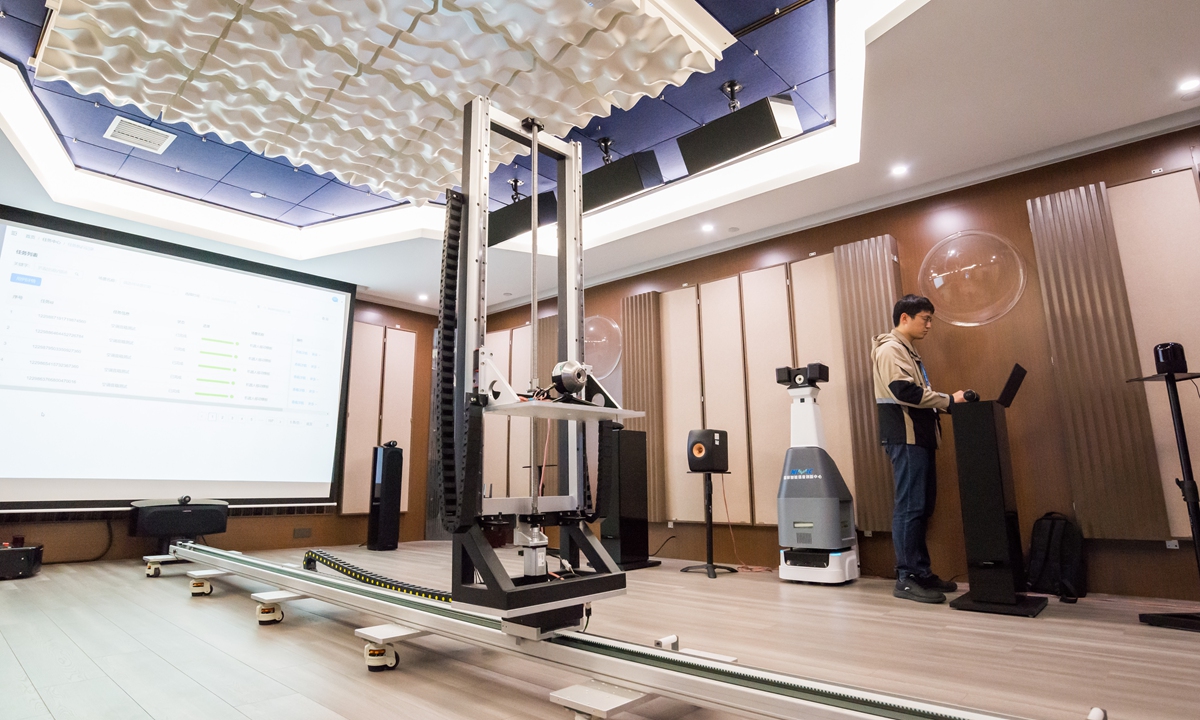
A staff member operates a robot at National Intelligent Voice Innovation Center in Hefei, East China's Anhui Province, on April 17, 2024. Photo: Chen Tao/GT
Global recognitionThe Government Work Report released at the two sessions in March this year stressed the need to spur industrial innovation by making sci-tech innovations and press ahead with new industrialization, so as to raise total factor productivity, steadily foster new growth drivers and strengths, and promote a new leap forward in the productive forces, according to the Xinhua News Agency.
Emerging industries supported by tech innovation were included in many provinces' plan to stimulate economic growth.
For example, Hunan Province plans to vigorously develop industries such as quantum information, bio-medicine, brain science and brain-inspired research, and liquid metal, and Guangdong Province will focus on expanding industries such as future electronic information, future smart equipment and future materials.
Chinese policymakers emphasize that scientific and technological innovation is the core element for developing new quality productive forces. They call for the whole of society to work harder on promoting industrial innovation through technological innovation, proactively align with the force of national strategic science and technology, and produce first-class research and development institutions both at home and abroad, so as to boost the country's own innovation capacity in key areas.
Hefei's rapid development has attracted the global attention. The New York Times highlighted the "Hefei model", writing that Hefei's industrial policies have been so successful in nurturing technology companies that China's central government has embraced tenets of what is known as the "Hefei model."
The Hefei model consists of using government money to buy newly issued shares in manufacturers and start-ups that need cash. Officials also arrange loans with attractive interest rates from commercial banks to finance new factories, according to the New York Times.
A distinctive feature of the Hefei model is that the government invests through industrial funds and other means to guide the direction of industrial development, while fully leveraging the role of market mechanism to attract high-quality enterprises. This combination enables Hefei to quickly respond to market changes and promote the formation of industrial clusters, Wang Peng, an associate researcher at the Beijing Academy of Social Sciences, told the Global Times.
These new quality productive forces are characterized by new technologies and new applications, and are inseparable from tech innovation. It can be said that Hefei has built a unique innovation ecosystem, and has accumulated solid experience. To a certain extent, Hefei's innovation, openness and tolerance represent China's high-quality development, Wang said.
China's industrial output significantly boosted the economy in the first quarter of 2024, with value-added industrial output up 6.1 percent year-on-year, data from the National Bureau of Statistics showed.
Experts said that improving market demand, macroeconomic policy support and operating conditions are all playing a role. The impact of advanced manufacturing is particularly prominent, driving improvements in both the quality and quantity of industrial output.
"The road of developing new quality productive forces should be fostered in technology enhancement and industry planning," Zhu Siqiao, an associate researcher at the Chinese Academy of International Trade and Economic Cooperation, told the Global Times.
China should promote technological transformation, upgrade traditional industries, and cultivate strategic emerging industries, future industries and green industries, Zhu added.
Through high-tech industrialization, Hefei is actively promoting the transformation of scientific and technological achievements into real productivity and injecting new momentum into regional development.
"China's high-growth development has been unbroken for many years, and its scale has covered many industrial categories. In some fields, we have achieved global leadership. We have entered a new stage and have requirement for higher quality of development, said Kong from Guochuang Software Co.
"In my view, the integration of technological innovation and massive businesses still has a lot of room for development in China," Kong said.

